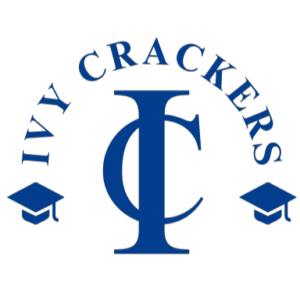Over the years we have helped students with their GMAT test-taking strategy. Couple of the most common struggling areas were how to approach GMAT reading comprehension and how to effectively answer reading comprehension questions. Here is a strategy that we have been recommending to students and it has helped them improve.
There are generally two types of RC (reading comprehension) that appear on GMAT.
- 1. Short Passage (Short RC)
- 2. Long Passage (Long RC)
GMAT Reading Comprehension Overarching Strategy
- 1. Short Passage:
Short RC generally consists of 2-3 paragraphs and has 3 questions to be answered. My suggestion would be to wrap this section within 4-6 minutes out of which 2 minutes can be spent reading the RC (and taking written/mental notes), 1 minute to answer generic questions such as main idea etc. and 2 minutes to answer specific questions related to the RC.
2. Long Passage:
Long RC generally consists of 3-4 paragraphs and has 4 questions to be answered. My suggestion would be to wrap this section within 6-8 minutes out of which 3 minutes can be spent reading the RC (and taking written/mental notes), 1 minute to answer generic questions such as main idea etc. and 3 minutes to answer specific questions related to the RC.
Detailed Strategy

For both short & long RC it is important to understand the topic and the main purpose/point of the passage. Generally the main purpose of the entire passage is available within first couple of lines of the passage or towards the end of the passage (can be a combination of two lines as well).
Within the passage each paragraph has a purpose (generally mentioned in first or second line of the passage). It’s difficult to remember the entire passage (especially the long and complex passage) and hence it becomes all the more important to understand what details are in what paragraph. Generally, you can pause at the end of each paragraph (for few seconds) and quickly summarise what that paragraph is all about.
Once you have understood the main purpose of the paragraph, you can speed-read through rest of the paragraph. While you do that, be on the lookout for two details 1) whether the sentence is an elaboration of main purpose of the passage 2) or is it a new information such change in direction of the paragraph/ a new idea. If it’s an elaboration of the main purpose, just move on. If it’s a new information, then read it carefully and make mental/written note.
You can do the same for other paragraphs. Once you have finished reading the passage, take a pause for few seconds and review the passage before you start answering the questions. You can think about main point of the passage and purpose of each paragraph.
Now once you have answered all the questions and you are reviewing the answers, you may check if your understanding about the passage changed while you were answering the questions. If it changed, then you will have to understand why it happened. Did it happen because you misread a paragraph (check what did you misread) or did it happen because you read too quickly and overlooked some information?
You should practice this approach during your study/practice sessions in a timed manner as I have indicated in the overarching strategy. During practice you should check if you were able to answer all the questions using main point of the passage, purpose of each paragraph, new information in each paragraph or you had to re-read the passage/paragraph coz of which you had to invest additional time. If you had to re-read, then see what parts of the passage were misunderstood or overlooked by you.
Key Takeaways
- 1. You DO NOT need to comprehend each line of the passage and understand what it indicates in detail
- 2. Understand main point/purpose of the passage
- 3. Understand purpose of each paragraph
- 4. Look for new information in each paragraph
- 5. Remember what details are mentioned in what part of the passage
- 6. Practice the strategy in a timed environment
- 7. Review your work and understand where you went wrong
To read about the latest changes in GMAT Exam structure and introduction of GMAT Focus Edition, visit our blog “Introduction to the new GMAT Exam Structure: GMAT Focus Edition“, or visit the official GMAT website.
To read about Critical Reasoning Strategy, visit our blog “From Average to Outstanding: Mastering GMAT Critical Reasoning Strategies“
How can IvyCrackers help you?
When it comes to making informed decisions about an MBA/MS/STEM program, there is often no substitute for firsthand knowledge and advice from those who have been through similar experiences. That’s why we, at IvyCrackers, firmly believe that one of the best ways to gain valuable insights about a particular MBA/MS/STEM program or university is to interact with current students and alumni of that very university
Connecting with them can give you a more comprehensive understanding of what it is be part of that university, both in terms of coursework and extracurricular activities, as well as the kind of career options that may be available after graduation. Our “Mentor Session” initiative is designed to help facilitate these connections by pairing you with members of our community who can share their personal experiences and perspectives with you.

Our team of mentors, at IvyCrackers, has been passionately dedicated to helping countless candidates achieve their academic and professional goals. We have worked tirelessly to provide comprehensive services that are tailored to your specific needs, including refining your application essays, conducting mock interviews, perfecting your resumes, and strengthening your profiles. Our commitment to excellence is reflected in the success stories we have helped create, with our clients consistently achieving remarkable feats in their chosen fields.
We believe that everyone has the potential to excel, and we are here to help you unlock that potential. So why not head over to our ‘Mentors’ section now and discover how we can help you fulfill your dreams today?
Visit our Youtube Channel, Linkedin or Instagram Page for regular updates!


